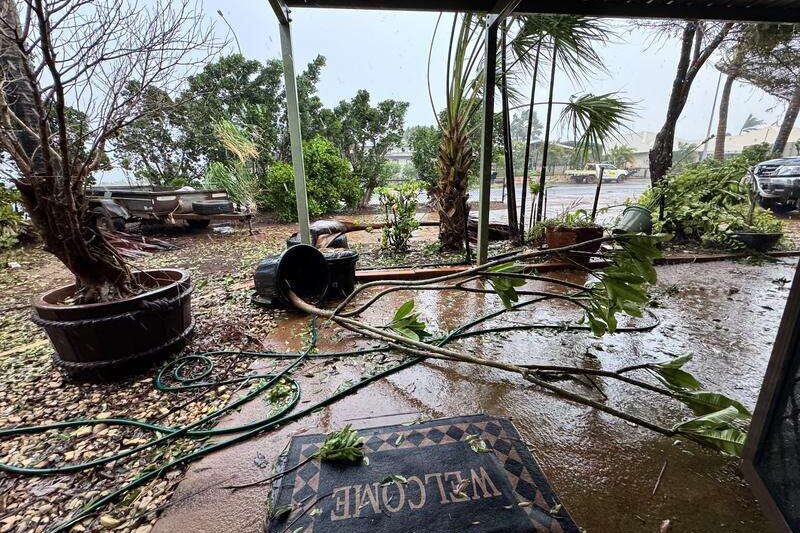
By Tracey Ferrier in Brisbane
The planet has suffered a catastrophic 73 per cent decline in the average size of monitored wildlife populations in just 50 years, a new report says.
WWF’s latest Living Planet Report chronicles unsustainable declines that have occurred at breakneck speed relative to the earth’s natural history.
It charts how observed wildlife populations plunged over the five decades from 1970 – the year the Beatles split and Australia was gripped by protests against the Vietnam war.
The 73 per cent decline is based on trends recorded in almost 35,000 populations, covering 5495 species of mammals, birds, amphibians, reptiles and fish around the world.
Australian species, including hawksbill turtles and mountain pygmy-possums, are among those that have crashed, contributing to the global result.
The report also warns the Great Barrier Reef is approaching a tipping point – when the cumulative effects of small, gradual changes reach a threshold, and change becomes self-perpetuating.
Rising sea temperatures coupled with ecosystem degradation have led to mass coral bleaching events in 1998, 2002, 2016, 2017, 2020, 2022 and again this year.
While the reef has shown remarkable resilience to date the report warns of the likely loss of 70 to 90 per cent of all coral reefs globally, including the Great Barrier Reef, even if the world can limit climate change to 1.5C.
Australian scientists have long warned that would mean profound environmental consequences, alongside economic ones given at least 64,000 jobs depend on the reef’s existence.
The decline of the hawksbill turtle on Milman Island, in the northern Great Barrier Reef, has scientists warning the population could be locally extinct in a little over a decade.
The species is critically endangered globally, and there’s been a 57 per cent decline in the number of nesting females on the island in over just 28 years.
That’s despite the population – which is vulnerable to climate change and legal and illegal harvesting – benefitting from the highest level of marine reserve protection, the report says.
The fading fortunes of Australia’s mountain pygmy-possum have also fed into the global report.
The mouse-sized nocturnal marsupial was believed extinct until a live one was found in 1966 at a ski lodge in Mt Hotham, in the Victorian Alps.
There may be fewer than 2000 left with some also found in alpine parts of NSW.
At one site on Mt Higginbotham, numbers have been carefully tracked since 1982.
“The overall Mt Higginbotham population had a dramatic decline after 2009 and has remained at about half the pre-2009 levels ever since,” says biologist Dean Heinze, who studies the species.
“Male numbers have been at their lowest on record for the last two years.”
The report was released as the Global Nature Positive Summit, convened by federal Environment Minister Tanya Plibersek, wraps up in Sydney.
The event is focussed on halting the loss of nature by 2030, leading to a full recovery by 2050.
Dermot O’Gorman is the CEO of WWF-Australia and says the report makes the scale of that task clear and while there’s still time to turn things around he points to a lack of urgency, locally and globally.
“To play our part, the Australian government needs to act quickly to improve national environmental laws and keep its promises to protect nature on a global level. What happens over the next five years is crucial.”
Who can be trusted?
In a world of spin and confusion, there’s never been a more important time to support independent journalism in Canberra.
If you trust our work online and want to enforce the power of independent voices, I invite you to make a small contribution.
Every dollar of support is invested back into our journalism to help keep citynews.com.au strong and free.
Thank you,
Ian Meikle, editor








![Rasa Kabaila was the youngest personal carer at a war veterans home at age 16, reports ELIZABETH KOVACS.
“When I was 15, I did work placement in a pediatric ward and then I did another placement at a war veterans home in Canberra,” she says.
“As much as I found it interesting, I found it all quite confronting.
“I was always told by people in [the war veterans home] that they hoped I would become a nurse,” she says.
“I was the youngest carer employed there at the time and I was working in the high-care dementia wing.”
To read on about Rasa's incredible experience as a nurse, visit our website at citynews.com.au or tap the link in our bio! 👩⚕️
#nurse #nurselife #nursepractitioner #nursestories #canberranews #citynews #localstories #canberrastories #Citynews #localnews #canberra #incrediblewomen #journalism #canberracitynews #storiesthatmatter #canberralocals](https://citynews.com.au/wp-content/uploads/sb-instagram-feed-images/476555403_1166125822189636_4572425384807928365_nfull.webp)
Leave a Reply